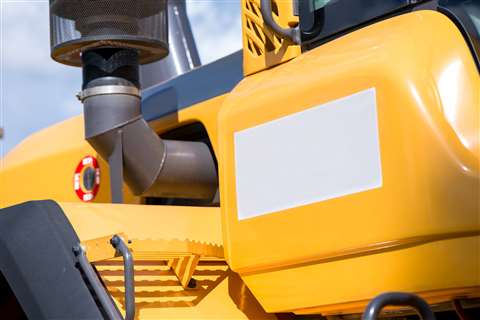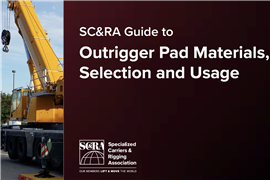What does the future hold for construction equipment emissions regulations?
22 June 2023
 Image: lainen via AdobeStock - stock.adobe.com
Image: lainen via AdobeStock - stock.adobe.com
It’s something of an odd time when it comes to the regulations governing emissions from diesel engines in off-highway equipment around the world.
For years, the construction machinery industry has been in a four-to-five-yearly cycle of introducing new technology in an effort to bring down emissions of particulates and nitrogen oxides (NOx).
That culminated in Europe with the recent implementation of Stage V regulations in 2019/2020, which have introduced the most stringent rules so far in Europe.
In the US, Tier 4 emission standards were phased in over a period covering 2011-2015. And in China, Stage IV standards (similar to EU’s Stage IIIB) arrived for machinery and engines rates 37-560kW in December 2022
But there is nothing yet firmed up on new regulations.
It coincides with a time when more battery electric machines are entering the scene, and manufacturers are also starting unveil nascent technologies like hydrogen fuel cell-powered machinery and hydrogen combustion engines.
That’s not to say that diesel emissions regulations have ceased to evolve – and as International Construction has previously reported, the combustion engine in construction isn’t dead yet.
But there is uncertainty as to where it all goes from here.
A period of monitoring
As far as the European Union is concerned, they are studying current Stage V powered machine through an ‘in-service monitoring’ program. That involves testing engines and after-treatment systems to verify that they are performing as intended and continue to meet emissions requirements after given periods of usage. This is expected to help the define what a future Stage VI would look like.
In the case of engine manufacturer Cummins, initial results show machines fitted with its technology are producing emissions well below the levels mandated by Stage V, says the company’s marketing communications director Steve Nendick.
Given that there is a 90% reduction in emissions between Tiers 3 and 4, going by the US regulations, Nendick sees a considerable advantage in replacing existing machines that conform to older standards first, before moving on to set new standards.
But he thinks that there will need to be an incentive for machinery owners – whether that is contractors or rental companies – to make the switch to the latest engines or new technology. That could either come from government incentives, new legislation or it could come from conditions in contracts of clients specifying how clean machines operating on their sites should be.
What form could new regulations take?
Further down the track, new regulations governing diesel engine emissions are coming. But what form they take is still up in the air.
When they do arrive, they could well involve limitations on CO2 in addition to particulates and NOx.
“For on-road vehicles the EU is bringing in Euro 7 regulations from 2027, as well as a separate CO2 rules,” says Nendick.
Cummins expects off-highway regulations – Stage VI in Europe and Tier 5 in the US, to arrive around 2029-2030.
“It’s an odd time where we haven’t got new regulations to work on, but there is this a real focus to improve sustainability and reduce carbon emissions,” he says.
“Unless there are incentives or regulations to push people to adopt CO2 reduction technology, how are you going to get people to do that? That’s one of the key challenges the industry has.
“Cummins is investing in these new technologies, battery electric, hydrogen engine and fuel cell. However, as a construction company, if you have a contract to fulfil, you’re not going to pay a substantially higher cost for a machine [with those technologies] than a diesel that does the same job, without incentives.”
He adds, “In my mind, the first step is pushing contractors to renew their fleet. We need to get everyone to the latest clean emissions standards to deliver environmental and operating benefits, and then decide what the future regulations should be.”
Regional variations confuse the picture
Unfortunately, emissions regulations vary by region and for global manufacturers of engines and equipment serving different local markets, this can prove to be a headache.
“There isn’t a global consistency in emissions,” says Nendick. “We thought it was heading in that direction. Essentially, you could have a common engine that would work in China, India, and everywhere else. But with differing local requirements it doesn’t look like that will be the case.”
That’s because not only do local market expectations vary, but also maintenance practices, operational standards and so on. And that is before you get to economic considerations like the cost involved in buying machinery that meets the highest of standards.
One aspect of the upcoming on-highway regulations that has piqued Nendick’s interest is around the ‘useful life’ over which the engine has to meet emissions standards. For Euro 6 the useful life was seven years.
For Euro 7, there is talk of the useful life being extended to 15 years, suggesting that the authorities are expecting a much longer working time for these engines.
“The thing with a diesel engine is people know how it works. There is a service and parts chain that people trust. They can look after it with their own technicians or via the OEM dealer. They can get the parts and the fuel easily. It’s a comfort zone,” says Nendick.
“To step out of that comfort zone is a big deal for people. And on the carbon emissions reduction side, I think everyone is still concerned over which is the best technology solution to start doing that.”
But he recalls a point that Eric Neal, executive director, global off-highway business at Cummins, made during ConExpo this year that it is important to show businesses like Cummins are investing in new technologies, even if they aren’t immediately for sale.
“It is all about giving customers confidence that someone is working to help them manage the change, because it is going to be a tough move for everyone. It’s an interesting time,” he says.



